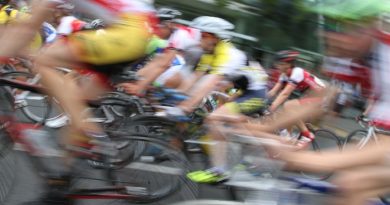Phillip Lucas unpacks key European industry 2022 reporting
In this guest feature we hand over to Phillip Lucas, a European cycling industry expert, and brand consultant, who’ll guide us through the myriad of region and country specific data that has been announced over the past 2 weeks.
 Thanks Simon. There’s certainly plenty to unpack as many European countries announce their 2022 figures, with more to follow through spring and summer.
Thanks Simon. There’s certainly plenty to unpack as many European countries announce their 2022 figures, with more to follow through spring and summer.
We’ll start by sidestepping the known issue of overstock – twice and more times the usual winter and springtime stock, which almost everyone has been juggling so far this year – a topic that has received some great coverage all across Europe, in many languages.
Here I’ll focus on published sell-out numbers and include some manufacturing and mobility related info when it stands out.
The general trend is a slump in units sold (particularly entry level MTB and entry level bikes) but a less negative, to sometimes lightly positive financial result. The market is indeed going through a reset – but in many regions, this reset has been to a level higher than 2019 and earlier values. Time will tell whether 2023 numbers continue this reset or whether we’re operating at a new raised baseline. An interesting side note is that more than one country saw an increase in IBD share of sales and a decrease in percentage online and sporting chain sales values. Perhaps driven by the slump in entry level bikes.
On the topic of growth: recreational and sporting bikes have generally seen growth in gravel alone. The return to an enthusiast driven recreational market is pushing classic bike ASP’s up, while mobility sales are increasing both the share and often value of city bikes sold. The mobility segment is spreading out from its historic stronghold of Denmark, Benelux, Switzerland, Austria and western Germany to show growth continent-wide.
First seen in the Netherlands, more and more countries are seeing eBike sales attain or exceed 50% of the retail world’s value of sales. And it is from these eBikes that a lot of growth – or stabilization in contractions, is coming.
Germany: Europe’s largest cycling market down in volume but up in value.
German unit sales shrunk ~2% (to ~4.6 M units) in 2022 – but this figure is still ~15% above pre-corona levels. Total value rose to a new record of €7.36B, which set a new all-time record for the bike industry in Germany. This value increase was driven by a the 46% of eBikes (2.2M units) sold.
German consumers are opting for slightly higher value and quality bikes, with the ASP of classic bikes increasing slightly to ~€500, and that of ebikes hitting ~€2800. Company and employee bike sales also drive results with ~450k bikes in lease under these programs (which provide higher quality classic bikes too at a ASP of €1800, while eBikes remain at the nationwide €2800).
As with each market, German has its unique facets. Notable in Germany is the leadership of MTB’s in the eBike market – accounting for 38% of all units. Furthermore in the MTB class, the absolute dominance of eMTB’s is clear with a staggering 90% of all units sold (and 97% of the value). Additionally, cargobikes have seen explosive growth, up to 213k units I n2022, up 27,4%. This in turn is leading to urban cultural discussions, as much of Germany’s national and regional governance lags well behind the people’s clearly demonstrated changes in mobility behaviour.
Austria: up on all fronts
The Austrian market was a outlier this year and grew in all metrics, +3% unit growth (to 506k), of which 247k eBikes (49%), delivering €1B or 74% of cash in tills. Market value topped ~1.4B. Normal bike ASP jumped 36% to a very notable ~€1800, with eBike ASP at €4200. Urban eBike sales grew ~9% to 127k, while eMTB sales grew 4% to 103k.
Even though units are smaller, the Cargo market grew notably with 4300 e Cargobikes (up 17%) and 500 classic cargobikes sold. Other jumps in growth were seen in folding bikes; up a notable 63% likely due to subsidies launched for rail subscription holders to buy bikes.
Switzerland: supply and consumer confidence shaky, for a repeated light contraction
Swiss sales shrunk ~2% for the year to 482k units (2021 saw a -1.5% contraction). Classic bike turnover fell 14% to 264k units while eBikes grew +17% to 218k units (now making for ~45% of all units).
Q1-2 were strong at +16.5% eBike units and +9.4% for classic bikes, but slumped demand in Q3-4 wiped that growth out. Breaking a wider continental trend, Swiss buyers opted for high end road (up) and gravel (up, but not as much as in 21), but like elsewhere purchased less MTB’s. Urban eBike sales grew with classic city and the very Swiss “SUV” class (ruggedized suspended MTB component city bikes with fenders and racks) likely taking sales from classic MTB’s, to top 70k units.
The Netherlands: Europe’s traditional powerhouse of bike mobility down but stable.
Unit sales shrunk by 7% (to 855k units) but grew 0.9% in value to €1.51 B in bike sales. A worldwide trendsetter for the transition to eBikes, the 10 year-on-year increase of share of eBike sales has shown no signs of reaching a plateau yet. Even while falling 12% in unit numbers overall due to supply issues, eBikes took a further 2% of market share in 2022 for 57% (478k units) of all units sold. This delivered a impressive 80% of the markets total value in bike sales. Classic bikes lost 17% unit sales over 2021 in 2022, mainly from entry level MTB and sporting bikes (a trend seen in most other regions).
A resultant overall ASP increased to €1799 reflects not only the known economical and operationally driven cost price increases but increases driven by recreational enthusiasts and continuing Benelux trend of consumers choosing higher-value better-equipped bikes. eBikes ASP hit €2489 (while earlier 2021 figures showed that 19% of bikes are sold at above €2700).
France: undergoing a significant mobility and bicycle purchasing culture change.
The French market shrunk ~7% (to ~2.6M units) in 22 at a 5% higher total market value; i.e. bikes of notably higher in price and quality. The total market value increased to €3.6B in 22 compared to €3.5B million in 21, eBike sales grew 12% to 28% of all units sold, for 61% of bicycle sales value, or €1.4Bmillion of the €2.4B million worth of bikes sold.
Interestingly the ASP of eBikes went down 1% in this period, but their unit growth was the clear driver of the overall financial result growth.
The market has grown by 52% in the last 5 years and is expected to double again in the next 10 years. Sales volumes of regular bikes fell by ~17%, due to the same trends seen around the world: a significant drop in entry-level MTB and children’s bikes. Gravel would be the only growth market. Consequently, classic bike av. value increased by 18%, driven by enthusiasts.
France is seeing notable reshoring of manufacture; 850,000 bikes were made in France in 2023, of which notable growth in 445,000 eBikes (also +28% on 21). The French manufacturing industry is therefore increasing in quality and price, while domestic production is also supplying a larger part of domestic sales.
Spain: 7 years of growth sees a slowdown.
Just published today; the Spanish market posted the largest negative result of all published European countries so far at -13% (1.36M) units over 2021, but did so for a lesser loss of -6% of the value over 2021, at €2.7B. Positive signs were that urban sales grew considerably at +22.5% to (a still somewhat limited) 147k units, and eBike sales followed the Europe-wide trend of growth at +5.7% to 236k units which delivered 45.7% of the € in cash registers. Despite this downturn, these figures are still 45% above 2019: We’re seeing a market reset, but as yet it is a reset to a new level. Bike ASPs increased (as in the rest of Europe in 2022) with mobility and enthusiast sales driving the market (compared to entry-level corona buyers) passing the 1k threshold for the first time in history to €1121.
Of note, export grew a phenomenal 76,5% over 2021, while production increased 2,8%. Some of this production will have added to the high stocks being managed on all levels of the supply chain – but this most likely means that some Spanish manufacturers are not seeing negative figures for 2021 -> 2022. In fact, Spain was the largest exporter of bikes out of the EU in 2022.
Spanish cycling infrastructure policy lags behind a lot of the rest of Europe (Outside of few cities that show that multimodal transport is certainly used when built like Barcelona, Sevilla, etc), which is likely to have played a role in the larger unit and value drop seen in Spain in ‘22. Luckily, the first Spanish cycling strategy and budgets were just released this year, currently focussing on making cycling a viable mobility mode in mid-sized towns.
UpShift Sports.
Phillip Lucas is a consultant and contractor who has been working in the bike industry since the 90’s, having worked in Spain, France, The Netherlands and the USA, in both recreational and mobility cycling.
Starting as a mechanic in Dutch stores, then as a bike product manager and engineer, he led the scaling of ROTOR Bike Components from a small Spanish brand to a globally recognized name in the 2000s. After this he moved to North America, setting up ROTOR’s USA Subsidiary in Boulder, CO and taking on a role as GM of Eddy Merckx Cycles USA in NYC.
After re-introducing Niner Bikes to Europe on returning to the Netherlands, he currently operates UpShift Sports from the Netherlands and France, offering Consulting and Contracting for brands looking for cross-disciplinary guidance and help in scaling internationally.
Stay tuned to Philip’s LinkedIn profile https://www.linkedin.com/in/philliplucas-upshiftsports/ or website www.upshiftsports.com for more details on European market trends and reporting, as well as general analysis on the cycling market.
More data, more conversation.
For those keen on data and insights based market analysis, the CI.N podcast recently hosted Shift Active Media Chief Strategy Officer (and resident data guru) Doug Baker. Click here to listen to the podcast.



